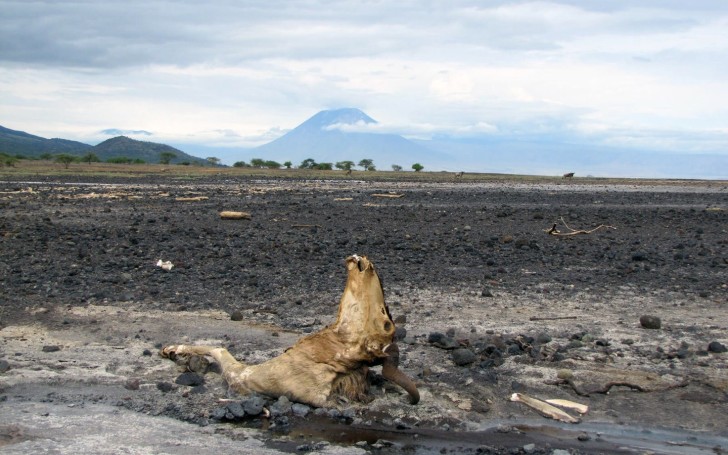

Lake Natron has been listed on the Ramsar List of Wetlands of International Importance due to its unique biodiversity and has also been recognized as an important ecoregion by the World Wildlife Fund.Not many people venture near the shores of Lake Natron in northern Tanzania. The lake enchants bird watcher’s across the world as large groups of flamingoes can be strutting around, the spectacle often referred to as the ‘pink parade’.

The high salinity of the lake ensures maximum food for these birds as they feed on the tilapia and the algae. Lake Natron is the most important breeding site in the world for Lesser Flamingoes as 75 percent of the world’s population of these flamingoes are hatched at the lake. An endemic species of fish, the alkaline tilapia, has adapted to the lake and lives along the edges of its hot spring inlets. It is a drying as well as anti-bacterial agent so immersion in natron can suck all the moisture out of a dead body and preserve it against microorganisms that will feed on it.Īnimals that die here can turn into calcified statues over time, because of the unique chemical makeup of the lake, which encrusts the carcasses with layers of salt, sodium carbonates, and sodium bicarbonates.Īlso Read: Did You Know That World’s Only Floating National Park Is In Manipur? Inhospitable To Most, Thriving A Fewĭespite having the most alkaline waters, Lake Natron supports an ecosystem of salt marshes, freshwater wetlands, flamingos and other wetland birds. Natron, after which the lake has been named, is a mineral salt that ancient Egyptians used for the mummification process. High levels of evaporation cause natron to be left behind in its bed. Volcanic ash from the Great Rift Valley is collected in its basin, making the lake hostile to most organisms. The water from the lake also does not drain out to any river or sea. Located in an arid region where rainfall is erratic, the terminal lake is fed by hot springs and small rivers. The salty crust, however, changes over time, giving the lake a different appearance each time. The lake gets its reddish hue from salt-loving microorganisms called halophiles that thrive in its alkaline waters and produce reddish pigments, which color the lake’s salt crust red. Also Read: This Lake In Uttarakhand Contains Hundreds Of Skeletons Belonging To 800 AD What Makes Lake Natron Unique?


 0 kommentar(er)
0 kommentar(er)
